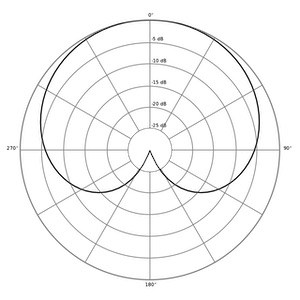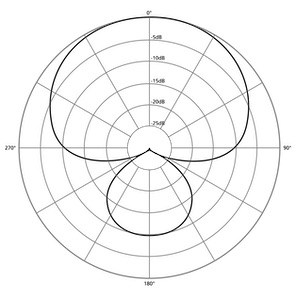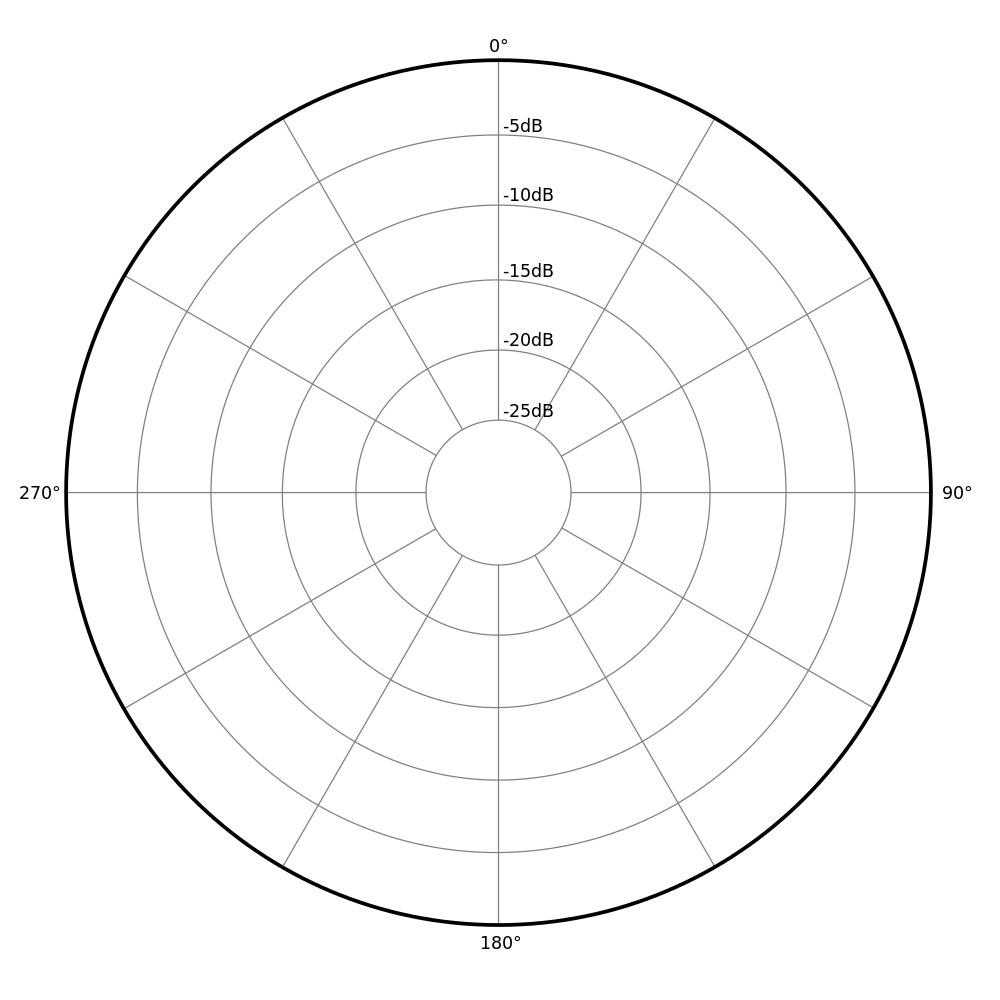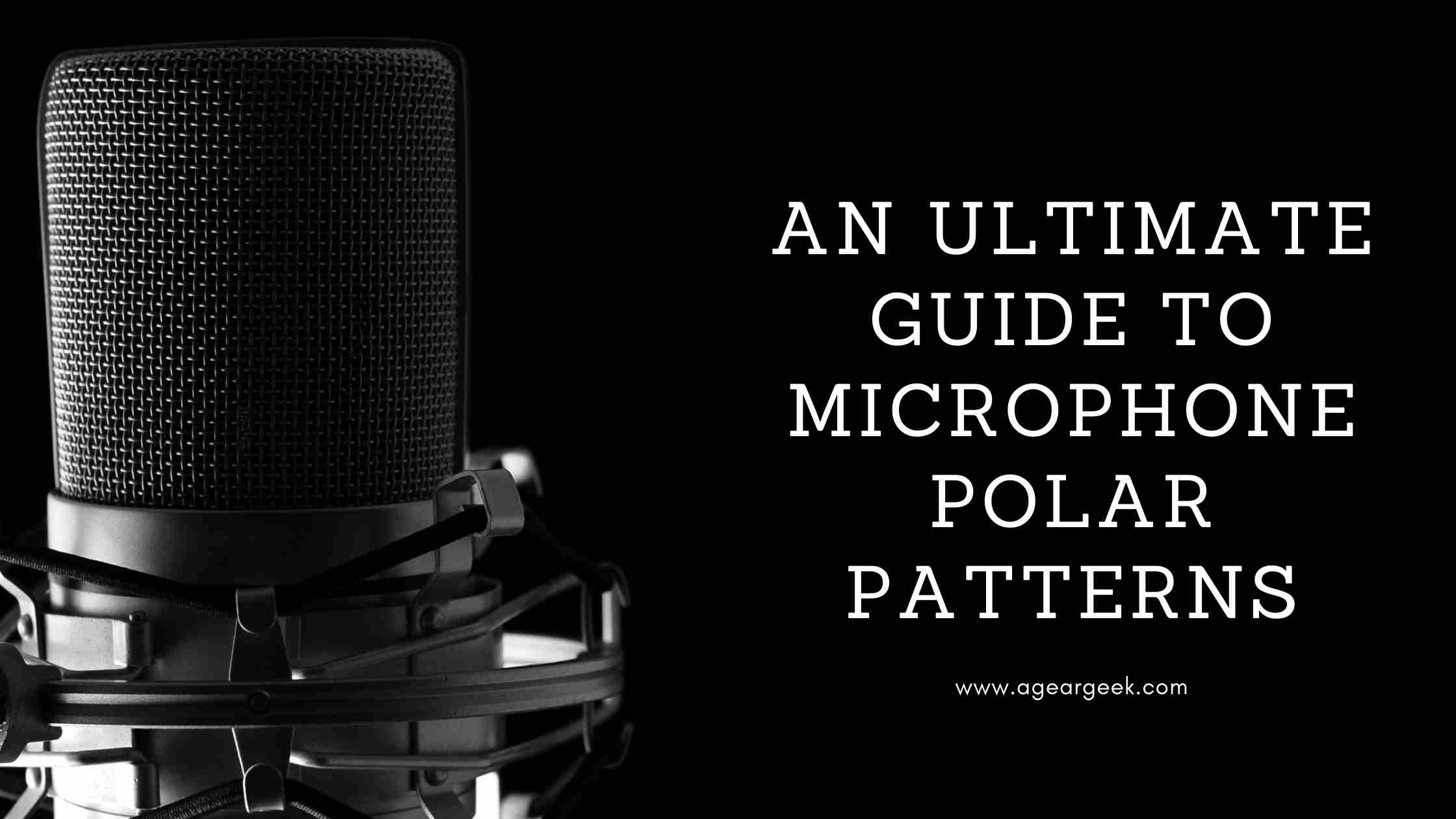Not all microphones are made equal. In addition to the different types of microphones, like Dynamic, Condenser, and Ribbon, there are some other factors that are also important to take note of. These are called Polar Patterns. Microphone polar patterns are specific to their use. In this article, we will discuss in detail what are microphone polar patterns and the use of each of them.
Disclosure: We’re an affiliate. We hope you love the products we recommend! This post contains affiliate links. If you use these links to buy the products, we may earn a commission from the qualified sales. These are at no additional cost to you. Thank you if you use our links, we really appreciate it!
What are Microphone Polar Patterns
Microphone Polar Patterns are the inherent directionality of the microphones to capture sound. These polar patterns define how much sound is captured from the front, how much sound is rejected from the sides or the back, or if there is any sound that is rejected at all by the microphone resulting in capturing sound from all directions.
There are primarily three types of Microphone Polar Patterns – Cardioid, Figure 8 and Omnidirectional. There are further improvisations made on these three basic polar patterns to achieve “modified” versions of a few of them.
How to read Microphone Polar Patterns
Microphone Polar Patterns are plotted on a 360 Degree graph for ease of understanding. The 0 Deg in the graph represents the front of the microphone and 180 deg represents the exact opposite or the back of the microphone.
These graphs work as visual guides in understanding the sensitivity of the microphone on a 360 Deg curve. The 360 Deg graphs help in understanding the area of coverage and to decide if the microphone is suitable for the kind of use you have in mind.
The front of the microphone at 0 Deg is also called the On Axis point. Off-Axis is any point off the 0 Deg.
Cardioid Polar Pattern

The Cardioid Polar Pattern is also called the Unidirectional Polar Pattern. As the word suggests it points to one direction and that is the front of the microphone. The microphone sensitivity is peak at 0 Deg and fades off at 180 deg.
Cardioid microphones are great in canceling background sounds due to the least sensitivity at the back. This feature of a cardioid microphone becomes even more pronounced in the case of Dynamic Microphones. Condenser and Ribbon Microphones are a lot more sensitive than the Dynamic ones and do capture some background sounds.
Super Cardioid

As I shared at the beginning, there are improvements done on the basic polar patterns to bring added flavor to the existing sensitivity curves. Super-Cardioid is one such example.
It is the basic Cardioid Polar Pattern but with modifications on the side and the back. In the Super Cardioid Pattern, the sensitivity curve is expanded slightly on the sides and the back. Unlike a cardioid microphone where at 180 Deg, the sound frequencies are practically fully rejected, in the super-cardioid pattern, there is an amount of sound that can pass through to the mic from the back.
In this pattern, the front of the microphone has the highest sensitivity and a reduced sensitivity at the back.
Cardioid and Super-Cardioid Polar Patterns in Different Types of Microphones
The Cardioid Polar Pattern is the most commonly used mode for most applications. These are great for vocals, live streaming, podcasting, instruments, live performances, etc. The Off-Axis rejection of these microphones makes them the best choice for live performances where the loud sounds of other instruments are rejected leaving the signals which are coming from the front.
Cardioid Dynamic Microphones
Dynamic Microphones due to their less sensitive nature work best in canceling any such backgrounds and are the most natural choices for live performances. The Shure SM58 is one such iconic microphone used in live performances for decades and still running strong. The other alternate to SM58 is the Sennheiser E-835. Both of these are fantastic choices.
No products found.
If your use is for Podcasting or Live Streaming, again a good dynamic microphone with the cardioid feature is what you need. It is a no-brainer why you will see so many live streamers or podcasters using the Shure SM7B. Another great option is Electro-Voice RE – 20 which is a staple in any radio or broadcasting studio. This does not mean these are not good for singing or vocals. These are all-rounder microphones and are great for most usages.
No products found.
Cardioid Condenser Microphones
Condenser microphones being more sensitive than the dynamic ones are most suited to be used in an acoustic treated room or in a studio. It is sensitive enough to capture minute sounds from the background. Condenser microphones can be of two types – Large Diaphragm Condenser and Small Diaphragm Condenser.
Large Diaphragm Condenser Microphones with Cardioid Patters are great for vocals and as well as for instruments. The Large Diaphragm Condenser can capture the lows and the subtle nuances of the vocals which a dynamic will not be able to. It makes the low frequencies beautifully lush. The Neuman TLM 103 is pure joy but it comes at a price. Other great choices but which will not break the bank are Audio Technica AT 4040.
No products found.
Small Diaphragm Condenser microphones are also called pencil mics due to the cylindrical shape. These mics give a very accurate picture of the sound, can capture high frequencies effortlessly, and provide a consistent polar pattern. Due to their capacity of handling high frequencies, SDCs are used extensively for instruments like acoustic guitars, hi-hat, snare, or other percussive instruments. Neumann KM 184 is a premium SDC microphone. Other good examples are Audio Technica AT 4021.
No products found.
Super Cardioid Ribbon Microphones
Ribbon Microphones are the most sensitive of all of the microphones. For most Ribbon Microphones you will need a suitable preamp to drive the microphone. Some of the ribbon microphones come with inbuild electronics by which it becomes reasonably easy to drive them through normal preamps.
Ribbon microphones are sensitive and generally fragile in nature. These microphones have a very thin strip of metal suspended in the magnetic field which is responsible for the sound. This ribbon is extremely thin only being a few mini microns thick. This makes the ribbon microphones being sensitive to sound plosives.
Ribbon microphones are known for their vintage warm sounds. They are great for Brass and Woodwinds as well. The newer generation Ribbon mics are created in a way that they are virtually indestructible and can be used for guitars and drums.
Good options of Super Cardioid Pattern of Ribbon Mics are Beyerdynamic M160. This mic is fantastic for acoustic stringed instruments, wind instruments, or percussion. The AEA KU5A is a fantastic Super-Cardioid Ribbon Microphone. This microphone has inbuilt electronics and comes in a sturdy built. A brilliant and beautiful microphone to have. Feels like owning more like a piece of art. Great for vocals.
No products found.
Figure 8 or Bi-Directional Polar Pattern

The Figure 8 Polar Pattern is one where you have maximum sensitivity at 0 Deg and bang opposite at 180 Deg. These microphones are also called the pressure gradient microphones. The figure 8 polar pattern has the diaphragm open to air from both sides. So unlike being responding to pressure from one side, microphones with Figure 8 responds to the differential in pressure from both sides.
This makes these microphones sensitive from both the front and rear axis. The Figure 8 Polar Pattern has the highest rejection from the sides. It practically rejects all sounds from 90 Deg and 270 Deg.
So, microphones with Figure 8 polar patterns are a good option where you do not want signals from the sides to affect your sound. These microphones are also brilliant options when you want to record 2 singers with a single microphone.
Normally if there is a single microphone for 2 singers, they will have almost touch each other with their cheeks for them to record. In Figure 8, they can stand in opposite directions and can enjoy the same sensitivity as you will have from 2 different mics.
This also works in the case when a podcaster wants to take an interview with a single mic, the same principle applies of sitting opposite to each other.
Uses of Figure 8 Polar Pattern
While it is relatively easy to understand why there should be a cardioid or omnidirectional mic, it becomes a bit difficult to comprehend why would you need the same sensitivity in the front and the back. There are some good uses and some mics come with this inherent property.
Figure 8 microphones are used for stereo recording and Blumlein Pair techniques. In this technique, two matched microphones with the Figure 8 patterns are positioned 90 deg from each other.
The capsules of the microphones are placed as close to each other as possible. The position of the mics is made in such a way that the angle between the microphones points to the sound source to be recorded. Proper use of this produces an exceptional stereo image.
Figure 8 Microphones
Ribbon microphones are in essence dynamic microphones. The only difference that instead the diaphragm being attached to a moving coil, the ribbons have a thin strip of metal suspended.
All ribbon microphones are by design bidirectional or figure 8 pattern unless designed otherwise. Royer R-121 is a brilliant Ribbon Mic with a Figure 8 pattern which can be used for practically everything from micing amps, percussion, woodwinds to even vocals. This microphone has a high SPL threshold which makes it very versatile being a ribbon mic. The AEA R84 is another such microphone with high SPL capabilities with the beautiful ribbon sound.
No products found.
There are other multipattern condenser microphones that also features figure 8 as a polar pattern. Some great options are Warm Audio WA-67 or WA-47. These are a few of the best mics around.
No products found.
Omni Directional Pattern

Omni Directional Pola Patterns are ones that have a uniform sensitivity across the 360 Deg curve. This means that irrespective of the position of the person who speaks is in the front, back, left, or right, the microphone will pick up the signal with equal sensitivity or gain. Omnidirectional microphones do not have the proximity effect. You will see this in a cardioid pattern when you move closer to the microphone, the bass or the lower frequencies are boosted.
These polar patterns are great for recording in a room where there are sound sources in different directions or perhaps in cases where you want to record the performance of a choir. These microphones are also good choices for productivity calls where there are multiple people in the room.
Though there are some places where omnidirectional mics shine better than unidirectional, it is best to use these in an acoustic treated room and not in loud environments. These microphones are also prone to feedback if they are near to the PA systems.
Omnidirectional Dynamic Microphones
Electrovoice RE 50B is a brilliant dynamic microphone with an omnidirectional pattern. This is specially used in broadcasting and interviews. A great choice for podcasting as well. The microphone comes with a four-stage pop filter, reducing plosives and wind noises to almost none. Built like a tank to last a lifetime.
Shure SM63 is another Omni mic that is great for speech, podcasting, and broadcast. It comes with an integral pop filter that reduces breadth noise and is optimized for speech applications. Again built like a tank to last a lifetime.
No products found.
Omnidirectional Condenser Microphone
Audio Technica makes some great Omnidirectional Condenser Microphones. A good example is AT 4022. It is a small diaphragm condenser with an omnidirectional polar pattern. It handles high SPLs with ease and is brilliant for piano, acoustic guitars, and other acoustic instruments. The omnidirectional pattern provides a wide pick up area and preserves the integrity of the sound.
No products found.
Summing Up
Hope this article has helped you to learn about polar patterns. If you want to learn more about different types of Microphones, you should read this article.
Though the cardioid polar pattern is mostly used, there are uses of the others like the Omni Directional and Figure 8. Ribbon mics are by default Figure 8 and the new generation ones are made in a way they can take a lot more SPL.
Figure 8 pattern can create beautiful sounding stereo capture. Cardioid and Super-Cardioid polar patterns remain preferred for vocals or for live performances while the Omnidirectional is for recording sound in a wider area.
Last update on 2024-05-17 / Affiliate links / Images from Amazon Product Advertising API





